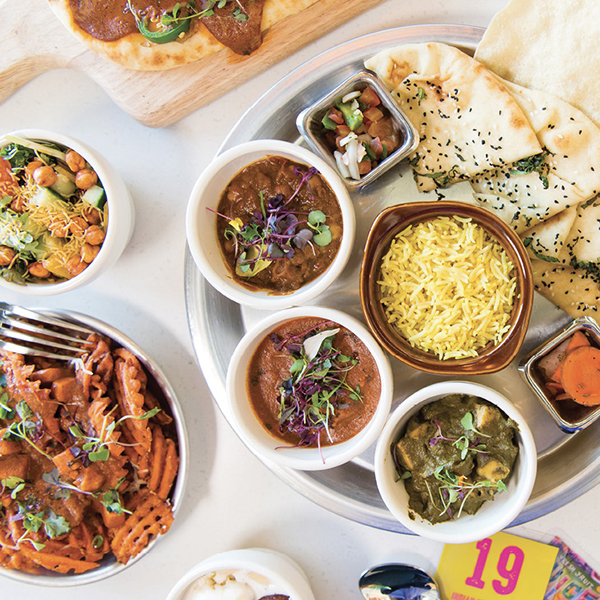Plant-based products and global flavors are among the potential growth drivers for the restaurant industry in 2022 and beyond, according to panelists on a Food Institute webinar this week.
“I think plant-based is the next big thing,” said Dan Rowe, co-managing partner of The Kitchen Fund and FranInvest. “I have seen plant-based Mexican, pizza, burgers — I am not plant-based, but it’s some of the best food I have ever had. People who can figure out how to create that experience for guys like me are going to win.”
Rowe and other participants in the webinar, titled “Top Restaurant Investment Trends: 2022 Outlook,” were mostly upbeat on the prospects for foodservice in the year ahead. Consumers have pent-up demand for dining out, they said, and many operators have successfully adapted their business models to accommodate increased demand for off-premises dining and made other adjustments to solve for the challenges of the current environment.
Mark Leavitt, co-founder and managing partner, Enlightened Hospitality Investments and Union Square Hospitality Group, agreed that the plant-based trend would be a part of the industry for some time to come, as part of an overall shift toward eating healthier and more sustainably.
“We think it’s the early innings of people wanting to eat healthier, more sustainable food,” he said.
Andrew K. Smith, managing director and co-founder, Savory Fund, which owns and operates several restaurant and food and beverage brands, agreed that the plant-based trend “is going to be around forever” in foodsevice, even though his company’s restaurants have seen sales of some plant-based items soften recently.
The investors are also bullish on some international restaurant concepts, including some focused on Indian and Middle Eastern cuisines.
“There are one billion-plus Indians, and there’s no restaurant chain,” said Rowe, whose companies have invested in multiple Indian and Middle Eastern brands, including The Halal Guys and a new start-up called Butter Chicken.
“Everyone wants to explore flavor profiles that are new to them, and different from the mainstream,” said Smith.
Restaurant operators will also have to figure out ways to operate more efficiently in order to accommodate rising labor costs, ongoing supply chain pressures and commodity price inflation. Smith said he expects that increased commodity costs and supply chain shortfalls will be a part of the industry through next year, and operators should not treat these pressures as transitory.
“You have to raise your prices,” he said.
Panelists agreed that ongoing cost pressures will force widespread price increases in the industry, but consumers may be willing to accept those increases now because they understand that inflation is widespread.
Some operators are innovating with service models and technologies that reduce labor costs, such as Brooklyn Dumpling Shop, which operates compact, automat-style restaurants where customers order from an app or use a kiosk and retrieve food themselves. The restaurants also feature dedicated pick-up areas for third-party delivery drivers.
“Nobody has done anything new in Asian in the last decade,” said Rowe. “I think it’s the right concept at the right time.”
Interestingly, customer perceptions of service can often improve when technology is implemented effectively to reduce labor, he said.
In addition to technologies that streamline service and minimize labor, database analytics has been growing in restaurants, Leavitt said, while Smith pointed to technologies that streamline the hiring and onboarding processes.
The panelists agreed that it is currently a good time to invest in restaurant concepts that have crave-able food and have figured out ways to survive in the challenging environment of the last two years.
“I love the optimism of people in this space,” said Leavitt. “I think people in the hospitality industry have an optimistic attitude that has helped them weather the pandemic.”
Related: Global Flavors of Mexico, Morocco Gain Popularity; Sweetgreen to Open 'Drive-In' Restaurant.

